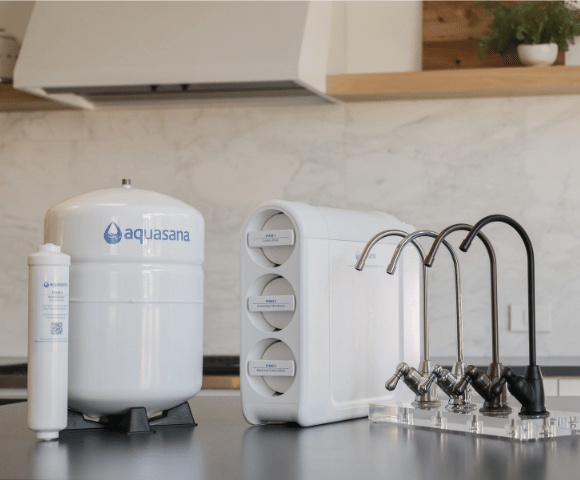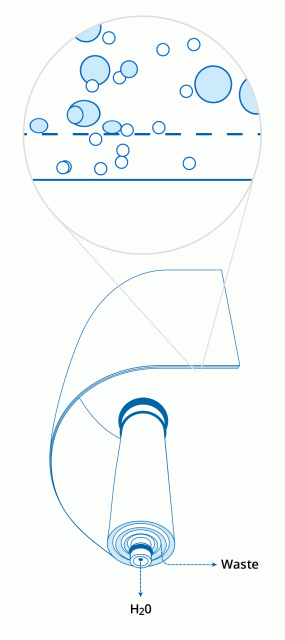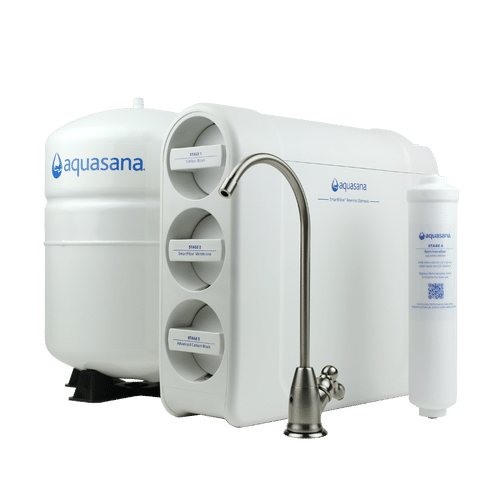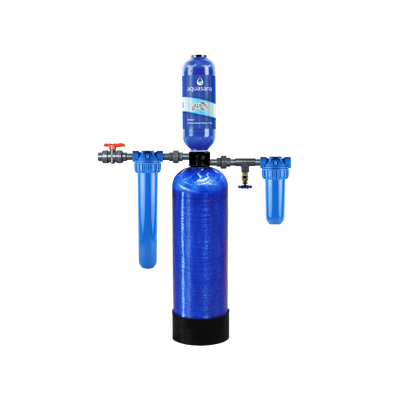Pro #3: Reverse osmosis provides better water for cooking
Many restaurants have started using reverse osmosis water to wash ingredients and cook with in order to improve the taste of their food. In fact, Chef and Owner of Crop Bistro & Bar Steve Schimoler noted:
“I never gave much thought to the water I used until I had the opportunity to research the role that water plays in my kitchen and restaurant. I quickly found the water that was purified using reverse osmosis (RO) technology provided me with a clean canvas which allowed the flavors and ingredients I used to shine.”
While the benefits of reverse osmosis are making it a standard in the food service industry, you can also use an RO system to give your home cooking an added boost.
Pro #4: Reverse osmosis is more convenient than pitchers
Reverse osmosis filters won’t take up fridge space (or counter space), or require refills and as frequent filter changes as water filter pitchers do. RO filters only need to be changed out once or twice a year and once installed, all you have to do is turn on the faucet for healthier, safer drinking water. The convenience of an RO system is a major benefit if you find yourself getting water several times a day for optimal hydration.
Pro #5: Reverse osmosis systems can help you save money in the long run
While the upfront cost of a reverse osmosis system may seem expensive, in the long run, you’ll end up saving money. This is especially true for those who buy water bottles or jugs each week. Currently, in the United States, the average cost of a 20-ounce bottle of water is around $1.50.
If you alone drink around a gallon of water per day, that’s around 6 to 7 bottles of water, running at almost $9-10 per gallon of water. That quickly adds up for larger households. With a reverse osmosis system, you can access filtered water for just a few cents a gallon without having to leave the house.
Disadvantages of reverse osmosis
While reverse osmosis is the most effective water filtration technique on the market — preventing particles as small as fluoride from entering your water — there are some downsides as with any filtration method.
Con #1: More water wasted
According to the EPA, “Reverse osmosis units use approximately three times as much water as they treat,” which may be reflected on your water bill. In fact, some household reverse osmosis systems only recover between 5%-15% of the water they filter.
Additionally, there aren’t many options for the proper disposal of wastewater. You can dispose of the wastewater into the sea, but for those who are landlocked, you should consider an evaporation system to avoid runoff or groundwater contamination, as it can be detrimental to the ecosystem.
Con #2: Some noticeable pressure drop
While the Aquasana SmartFlow® Reverse Osmosis features a reliable flow rate of 0.8 gallons per minute, many people who use alternative reverse osmosis filters experience a fairly noticeable pressure drop in their water flow rate.
Con #3: Loss of minerals
Reverse osmosis is such a powerful filtration method, that in addition to contaminants, it also removes healthy minerals. By removing good minerals from your water, it loses some of the health benefits and can also have an off taste which makes it less enjoyable to drink. To counteract this, some systems, like the Aquasana SmartFlow® Reverse Osmosis include a remineralizer to restore beneficial minerals that would otherwise be lost.
Is reverse osmosis worth it?
Reverse osmosis is a popular method of water filtration, but it comes with pros and cons that each person will need to consider to determine if an RO filter is right for them. If you’re looking for maximum contaminant removal in the water you use for cooking and drinking, you’ll find that reverse osmosis filters are a great solution with more convenience than bottled water. However, you should be mindful that these systems create wastewater, and some systems lower your water pressure and remove minerals.
At Aquasana, we take pride in making our reverse osmosis system the most efficient, reliable, and durable water filtration system on the market. The SmartFlow® Reverse Osmosis filter reduces 15x the contaminants of the leading pitcher filter brand. Plus, with the included remineralizer, you’ll get healthy amounts of calcium, magnesium, and potassium for optimally alkaline, pH balanced water. Shop now to enjoy the benefits of reverse osmosis in your home.





